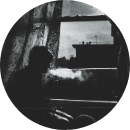Read the following passage and mark the letter A, B, C, or D on your answer sheet to indicate the correct answer to each of the questions from 36 to 42.
No educational medium better serves as a means of spatial communication than the atlas. Atlases deal with such invaluable information as population distribution and density. One of the best, Pennycooke’s World Atlas, has been widely accepted as a standard owing to the quality of its maps and photographs, which not only show various settlements but also portray them in a variety of scales. In fact , the very first map in the atlas is a cleverly designed population cartogram that projects the size of each country if geographical size were proportional to population. Following the proportional layout , a sequence of smaller maps shows the world’s population density, each country’s birth and death rates, population increase and decrease , industrialization, urbanization , gross national product in terms of per capita income, the quality of medical care, literacy, and language. To give readers a perspective on how their own country fits in with the global view, additional projections despite the world’s patterns in nutrition, calorie and protein consumption, health care, number of physicians per unit of population, and life expectancy by region. Population density maps on a subcontinental scale, as well as political maps, convey the diverse demographic phenomena of the world in a broad array of scales.
What is the main topic of this passage ?
A. The educational benefits of atlases.
B. Physical maps in an atlas
C. The ideal in the making of atlases
D. Partial maps and their uses












